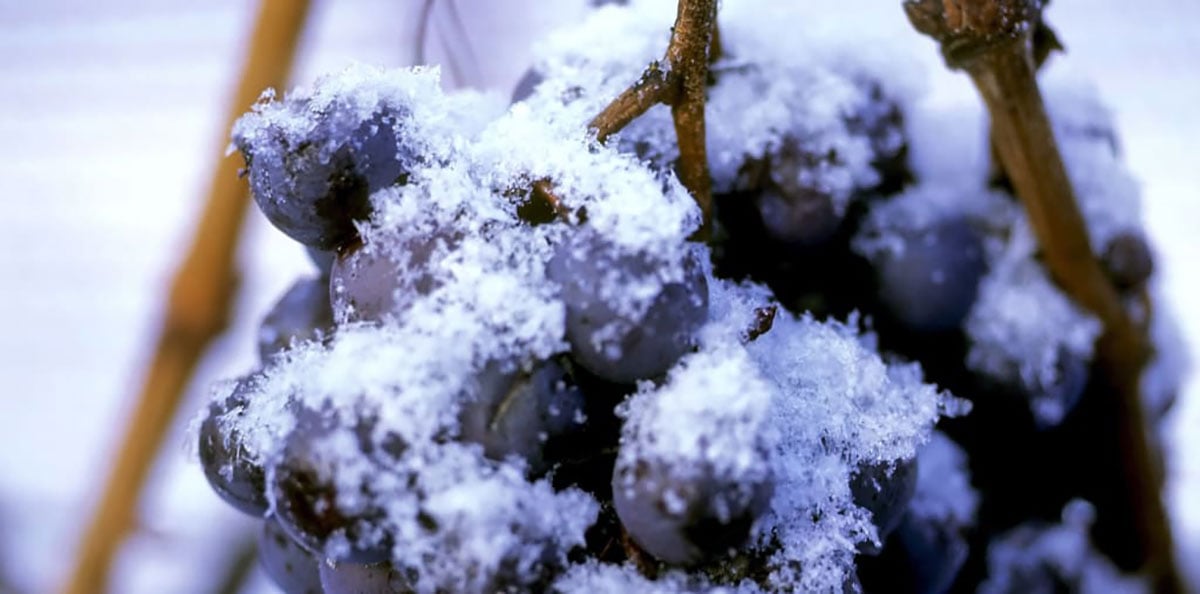

Merlot, Cabernet, Riesling… red, white, sparkling… when it comes to wine there seems to be an endless amount of varieties and types to choose from, so how is a person to know what is right for them? Unfortunately the easiest way to figure that out is to go to a tasting, or try all of the varieties to determine which ones you like. Once you figure out what types of wine you like you can narrow it down even further to brands or styles.
With this article though, we want to dive into a type of wine that most people don’t know about, and that is Ice Wine.
Ice wine is unique in the way it’s harvest and the way its prepared when compared to the other, more common, wines available today. A wine can only be called Ice Wine if it adheres to very specific techniques throughout the production process. Wines that don’t follow these guidelines cannot be labeled as Ice Wine, but can be called by other names.
Ice Wine Harvesting
When you think of the name “Ice Wine” what’s the first thing that comes to mind? I’m hoping you said “ice”, because you would be right. Ice plays a major role in the reason that Ice Wine is called ice wine, but the reason may surprise you.
This super sweet wine is supposed to be served chilled, but that’s not why it’s called Ice Wine, the real reason is that the grapes used to produce this wine need to be harvested when they are frozen to the vine. So while most grapes are harvested in the late summer into fall, ice wine grapes are harvested in the middle of winter when they are completely frozen.
Once the grapes are harvested they are immediately brought to the winery for processing. They are put through a grape crusher where they are pressed until the liquid is extracted. Only about 10-20% of the liquid in the frozen grapes is used to great ice wine, and the liquid is extremely sweet, sometimes even sweeter than a can of your favorite soda.
In order to be considered true Ice Wine, the grapes must be naturally frozen outside and cannot be commercially frozen and then crushed. This means that these grapes are grown in very cold climates like Germany, Austria, Canada and sometimes China. If the grapes are commercially frozen and then used to create wine, the labels are not allowed to say “Ice Wine”, instead you’ll find them called “iced wine” or “dessert wines”. So if you’re looking for true Ice Wine, make sure you read the labels correctly.
What Does Ice Wine Taste Like?
As we mentioned above, Ice Wine is a very sweet wine. Since the water freezes in the grapes, but the sugars and other dissolved solids do not, it creates a wine that is even sweeter than most sugar filled sodas. Because of the sweetness of the wine, it is often served as a dessert wine and not something that you would normally order with a meal, however it can be paired with some softer cheeses if you’re looking for a food pairing.
Ice Wine is designed to be a very fruity tasting wine to go along with the high sugar and high acidity. It varies in alcohol content, but usually hovers around 10% alcohol, which is typically a little less than traditional table wine, although some sweeter wines can come in at alcohol levels around 6%.
Why is Ice Wine Expensive?
In general, Ice Wine costs a bit more than your typical bottle of wine. An average bottle of Ice Wine will cost you between $30 to $50 per bottle depending on what location the wine is from.
Since the process for making the wine is so difficult, and requires harvesting at very specific times, the cost for producing Ice Wine is more expensive than most traditional wines, which is then passed on to the customer. In addition to harvest issues, it requires a lot more grapes to produce less wine when compared to grapes that are harvested un-frozen. It usually takes about 4-5 times as many grapes to create an Ice Wine than it does for a traditional bottle of wine. And all of the grapes are being hand picked to ensure that they are in the right condition to create the best wine.
Because the process is so rigorous and the market for Ice Wine is still relatively small, it means that for it to be worth it to the wineries, they need to charge a premium. But if you’re looking for a great dessert wine and want to try something a little different, pick up a bottle of real Ice Wine and give it a try.
